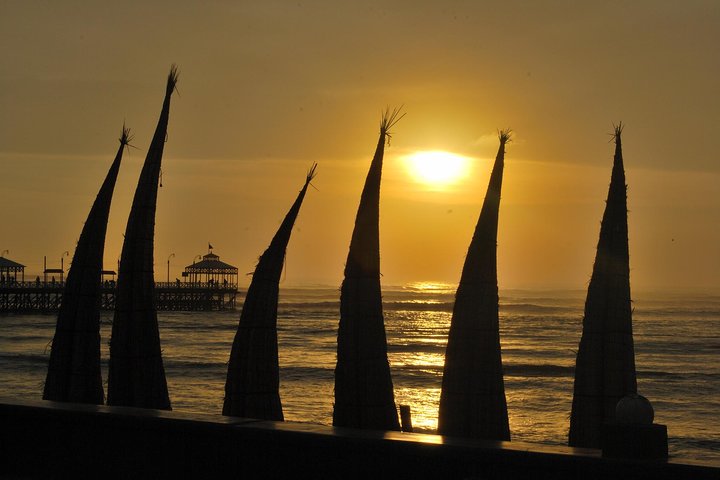Exploring the Enigmatic Ruins of the Moche: A Journey to the Temple of the Moon
Drawn by the allure of ancient civilizations, I embarked on a journey to Trujillo, Peru, to explore the enigmatic ruins of the Moche and Chimu cultures. The Temple of the Moon, with its vibrant murals and rich history, promised an unforgettable adventure.
Unveiling the Mysteries of the Moche: A Journey to the Temple of the Moon
The allure of ancient civilizations has always captivated my imagination, and the Moche culture, with its enigmatic ruins, was no exception. As I embarked on my journey to Trujillo, Peru, I was filled with anticipation to explore the Temple of the Moon and immerse myself in the rich tapestry of history that this archaeological site promised. The Moche civilization, predating the Inca, left behind a legacy that continues to intrigue archaeologists and travelers alike.
A Walk Through Time: The Temple of the Moon
Arriving at the site, the first thing that struck me was the sheer scale of the Huaca de la Luna. The Temple of the Moon, with its seven distinct levels, each built atop the other, stood as a testament to the architectural prowess of the Moche people. Our guide, a passionate storyteller, painted vivid pictures of the past as we walked through the temple’s corridors adorned with multicolored friezes. The murals, in hues of black, bright red, sky blue, white, and yellow, depicted scenes of ritual and mythology, offering a glimpse into the spiritual life of the Moche.
The experience was nothing short of mesmerizing. As a biologist with a deep appreciation for the interconnectedness of life, I couldn’t help but marvel at how the Moche civilization thrived in harmony with their environment. The intricate designs and symbols on the walls seemed to echo the natural world, a reminder of the delicate balance that ancient cultures maintained with their surroundings.
The Echoes of History: Huaca del Sol
Though the Huaca del Sol, the Temple of the Sun, was closed to visitors, its presence loomed large over the landscape. Known as the largest adobe pyramid in the Americas, it was constructed with an astounding 130 million bricks. The sheer magnitude of this structure spoke volumes about the Moche’s engineering capabilities and their reverence for the sun, a vital source of life and energy.
Standing at the base of this monumental pyramid, I felt a profound connection to the past. It was as if the whispers of the Moche ancestors were carried on the wind, sharing their stories with those willing to listen. This connection to history, to the land, and to the people who once called it home, is what makes exploring such sites an enriching experience.
A Journey Beyond: The Ruins of Chan Chan
After a morning spent unraveling the mysteries of the Moche, I ventured north to the ruins of Chan Chan, the capital city of the Chimu civilization. Spanning 22 square kilometers, this vast archaeological site was a stark contrast to the Moche ruins. The Chimu, contemporaries of the Inca, left behind a city of immense scale and complexity.
Walking through the walled compounds of Chan Chan, I was struck by the ingenuity of the Chimu people. The towering exterior walls, standing 33 feet tall, enclosed a labyrinth of courtyards and ceremonial spaces. Much of the site was preserved, shielded from the elements, allowing visitors to step back in time and witness the grandeur of a civilization that once thrived along the Peruvian coast.
As I concluded my journey, I was reminded of the importance of preserving these cultural treasures. The stories they tell are not just of the past but of our shared human heritage. As an advocate for conservation, I left Trujillo with a renewed sense of purpose, inspired to continue my work in protecting the natural and cultural wonders of our world.












































